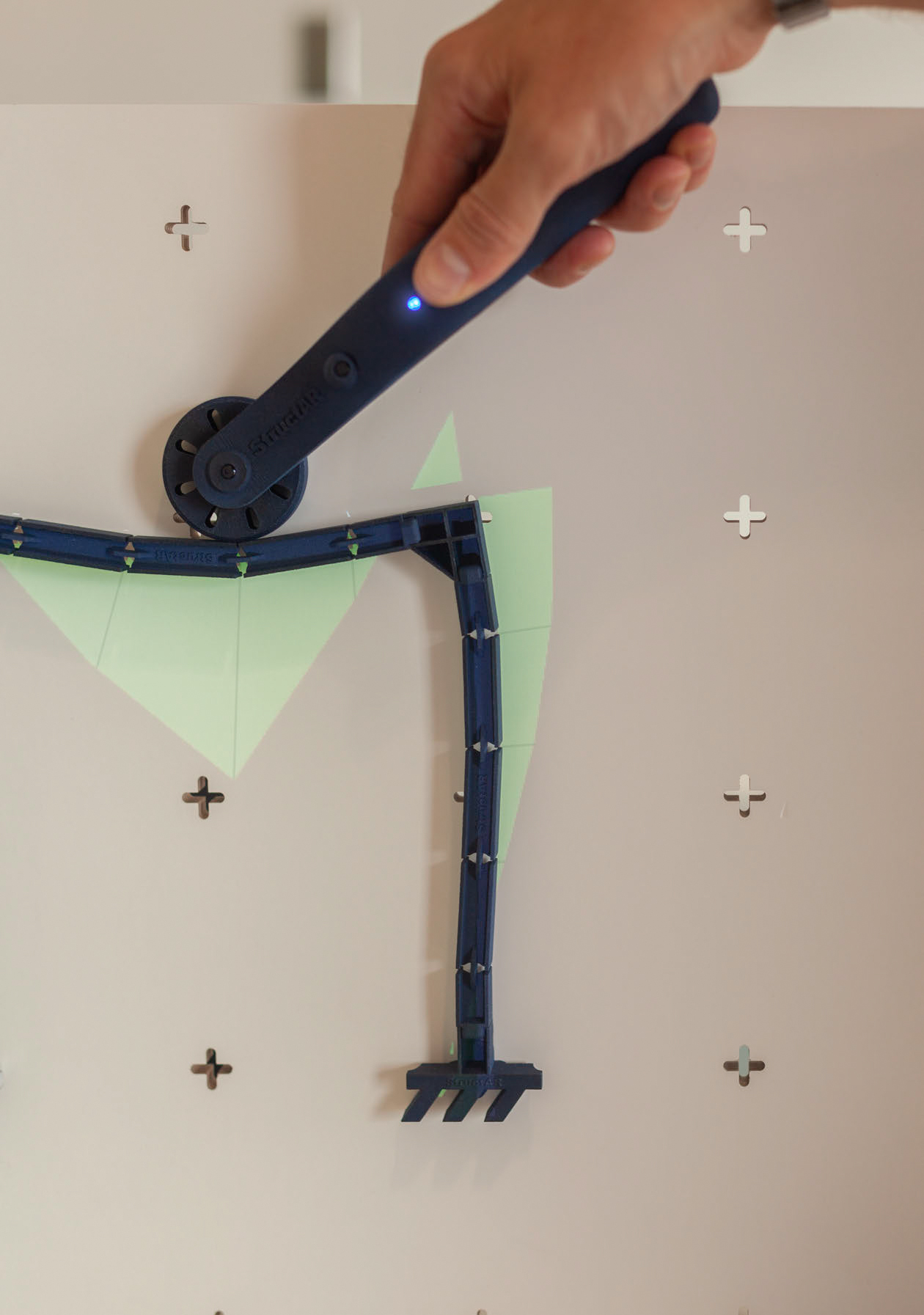constructAR
_
Gregory Quinn + Fabian Schneider, Swinburne University of Technology
This project is focussed on the benefits of learning by doing. Touching something physically is not only more stimulating and rewarding than just visualising new concepts abstractly, but haptics actually triggers our brains to make more effective connections. Put simply: by touching, we learn better! ConstructAR presents an entirely novel proof-of-concept technology which allows users to physically interact with hand-sized building components (e.g. springs, pulleys, beams), engage in explorative design thereof and, crucially, gain insights from projected visual content of pedagogical value which the physical objects cannot convey on their own (such as forces, acceleration or electrical current). Such augmentation of physical objects under user-imposed manipulations is wholly novel and promises to transform active learning in STEM education and has implications for a new age of analogue-digital hybrid learning. The importance of STEM education is a policy focus of governments worldwide meaning that it must become more accessible, more effective and more fun if its broader dissemination is to succeed, particularly underprivileged communities. This novel technology is effectively a ‘classroom in a box’. It is a physical kit of consisting of a board and parts which also grants its users access to a digital platform of learning, content and sharing. These kits will assist educators in delivering syllabus to their students and enable students to learn complex themes in an engaging, colourful and gamified manner. Expansion packs and lesson plans will be purchasable to the end-user via an online marketplace. However, the core innovations are as follows:
1)facilitating active learning and explorative design which have well-established benefits (but remain overwhelmingly underexploited in most classroom settings), 2)exploiting the benefits of the “haptic bond” between visual and auditory stimuli which has academically demonstrable cognitive and pedagogical value, 3)digitally augmenting the physical components with projected images powered by advanced simulations making the ‘invisible become visible’, 4)strategic implementation of gamification techniques as have shown to be effective in education and other fields.
Novel technology has been developed by the design team to make learning more effective, engaging, and fun. This technology offers a glimpse of a new form of haptics-digital hybrid learning.
_
Gregory Quinn_ is a course leader for Architectural Engineering at Swinburne, Gregory Quinn pursues innovation by navigating between the arts and sciences in all his professional pursuits.
Fabian Schneider_ is a researcher and computational architect exploring the boundaries between practice, design and human interface.
Image: An early prototype of constructAR.
